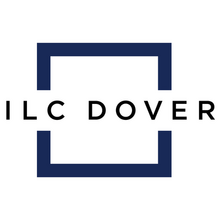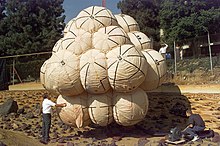
Extravehicular activity (EVA) is any activity done by an astronaut in outer space outside a spacecraft. In the absence of a breathable Earthlike atmosphere, the astronaut is completely reliant on a space suit for environmental support. EVA includes spacewalks and lunar or planetary surface exploration. In a stand-up EVA (SEVA), an astronaut stands through an open hatch but does not fully leave the spacecraft. EVAs have been conducted by the Soviet Union/Russia, the United States, Canada, the European Space Agency and China.

A space suit or spacesuit is a garment worn to keep a human alive in the harsh environment of outer space, vacuum and temperature extremes. Space suits are often worn inside spacecraft as a safety precaution in case of loss of cabin pressure, and are necessary for extravehicular activity (EVA), work done outside spacecraft. Space suits have been worn for such work in Earth orbit, on the surface of the Moon, and en route back to Earth from the Moon. Modern space suits augment the basic pressure garment with a complex system of equipment and environmental systems designed to keep the wearer comfortable, and to minimize the effort required to bend the limbs, resisting a soft pressure garment's natural tendency to stiffen against the vacuum. A self-contained oxygen supply and environmental control system is frequently employed to allow complete freedom of movement, independent of the spacecraft.
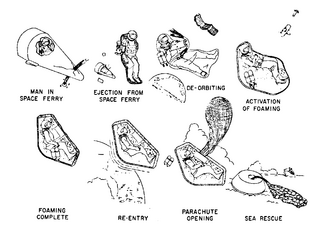
MOOSE, originally an acronym for Man Out Of Space Easiest but later changed to the more professional-sounding Manned Orbital Operations Safety Equipment, was a proposed emergency "bail-out" system capable of bringing a single astronaut safely down from Earth orbit to the planet's surface. The design was proposed by General Electric in the early 1960s. The system was quite compact, weighing 200 lb (91 kg) and fitting inside a suitcase-sized container. It consisted of a small twin-nozzle rocket motor sufficient to deorbit the astronaut, a PET film bag 6 ft (1.8 m) long with a flexible 0.25 in (6.4 mm) ablative heat shield on the back, two pressurized canisters to fill it with polyurethane foam, a parachute, radio equipment and a survival kit.

Vectran is a manufactured fiber, spun from a liquid-crystal polymer (LCP) created by Celanese Corporation and now manufactured by Kuraray. Chemically it is an aromatic polyester produced by the polycondensation of 4-hydroxybenzoic acid and 6-hydroxynaphthalene-2-carboxylic acid.

The Extravehicular Mobility Unit (EMU) is an independent anthropomorphic spacesuit that provides environmental protection, mobility, life support, and communications for astronauts performing extravehicular activity (EVA) in Earth orbit. Introduced in 1981, it is a two-piece semi-rigid suit, and is currently one of two types of EVA spacesuits used by crew members on the International Space Station (ISS), the other being the Russian Orlan space suit. It was used by NASA's Space Shuttle astronauts prior to the end of the Shuttle program in 2011.

The Apollo/Skylab space suit is a class of space suits used in Apollo and Skylab missions. The names for both the Apollo and Skylab space suits were Extravehicular Mobility Unit (EMU). The Apollo EMUs consisted of a Pressure Suit Assembly (PSA) aka "suit" and a Portable Life Support System (PLSS) that was more commonly called the "backpack". The A7L was the PSA model used on the Apollo 7 through 14 missions.

The Advanced Crew Escape Suit (ACES), or "pumpkin suit", is a full pressure suit that Space Shuttle crews began wearing after STS-65, for the ascent and entry portions of flight. The suit is a direct descendant of the U.S. Air Force high-altitude pressure suits worn by the two-man crews of the SR-71 Blackbird, pilots of the U-2 and X-15, and Gemini pilot-astronauts, and the Launch Entry Suits (LES) worn by NASA astronauts starting on the STS-26 flight, the first flight after the Challenger disaster. The suit is manufactured by the David Clark Company of Worcester, Massachusetts. Cosmetically the suit is very similar to the LES. ACES was first used in 1994.

The Mercury space suit was a full-body, high-altitude pressure suit originally developed by the B.F. Goodrich Company and the U.S. Navy for pilots of high-altitude fighter aircraft. It is best known for its role as the spacesuit worn by the astronauts of the Project Mercury spaceflights.
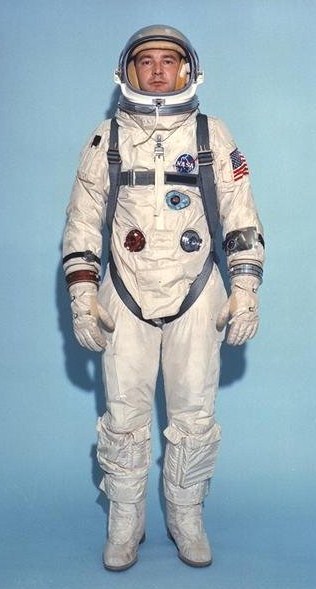
The Gemini spacesuit is a spacesuit worn by American astronauts for launch, in-flight activities and landing. It was designed by NASA based on the X-15 high-altitude pressure suit. All Gemini spacesuits were developed and manufactured by the David Clark Company in Worcester, Massachusetts.

Inflatable space structures are structures which use pressurized air to maintain shape and rigidity. The technological approach has been employed from the early days of the space program with satellites such as Echo, to impact attenuation system that enabled the successful landing of the Pathfinder satellite and rover on Mars in 1997. Inflatable structures are also candidates for space structures, given their low weight, and hence easy transportability.

A primarylife support system (PLSS), is a device connected to an astronaut or cosmonaut's spacesuit, which allows extra-vehicular activity with maximum freedom, independent of a spacecraft's life support system. A PLSS is generally worn like a backpack. The functions performed by the PLSS include:
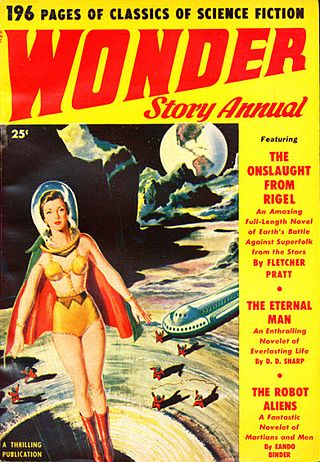
Science fiction authors have designed imaginary spacesuits for their characters almost since the beginning of fiction set in space.
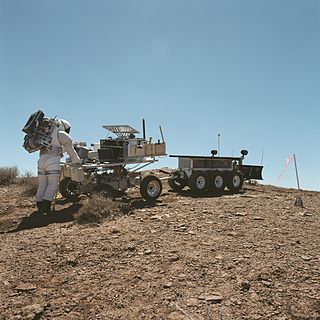
NASA's Desert Research and Technology Studies is a group of teams which perform an annual series of field trials seeking to demonstrate and test candidate technologies and systems for human exploration of the surface of the Moon, Mars, or other rocky bodies.

A suitport or suitlock is an alternative technology to an airlock, designed for use in hazardous environments including in human spaceflight, especially planetary surface exploration. Suitports present advantages over traditional airlocks in terms of mass, volume, and ability to mitigate contamination by—and of—the local environment.

The Constellation Space Suit was a planned full pressure suit system that would have served as an intra-vehicular activity (IVA) and extra-vehicular activity (EVA) garment for the proposed Project Constellation flights. The design of the suit was announced by NASA on June 11, 2008, and it was to be manufactured by Houston, Texas-based Oceaneering International, the 4th company after the David Clark Company, Hamilton Sundstrand, and ILC Dover to produce life-support hardware, as a prime contractor, for in-flight space use.

Space architecture is the theory and practice of designing and building inhabited environments in outer space. This mission statement for space architecture was developed at the World Space Congress in Houston in 2002 by members of the Technical Aerospace Architecture Subcommittee of the American Institute of Aeronautics and Astronautics (AIAA). The architectural approach to spacecraft design addresses the total built environment. It is mainly based on the field of engineering, but also involves diverse disciplines such as physiology, psychology, and sociology.
Human analog missions are activities undertaken on Earth in various environments to simulate aspects of human missions to other worlds, including the Moon, asteroids, and Mars. These remote field tests are performed in locations that are identified based on their physical similarities to the extreme space environments of a target mission. Such activities are undertaken to test hardware and operational concepts in relevant environments.

The Z series is a series of prototype extra-vehicular activity (EVA) space suits being developed in the Advanced Extravehicular Mobility Unit (AEMU) project under NASA's Advanced Exploration Systems (AES) program. The suits are being designed to be used for both micro-gravity and planetary EVAs.

A Mars suit or Mars space suit is a space suit for EVAs on the planet Mars. Compared to a suit designed for space-walking in the near vacuum of low Earth orbit, Mars suits have a greater focus on actual walking and a need for abrasion resistance. Mars' surface gravity is 37.8% of Earth's, approximately 2.3 times that of the Moon, so weight is a significant concern, but there are fewer thermal demands compared to open space. At the surface the suits would contend with the atmosphere of Mars, which has a pressure of about 0.6 to 1 kilopascal. On the surface, radiation exposure is a concern, especially solar flare events, which can dramatically increase the amount of radiation over a short time.
Eleanor ("Ellie") Foraker was an American seamstress who worked at the International Latex Corporation (ILC) and was involved in NASA's space program. She left the Playtex division of ILC Dover in 1964 and worked on underground inflatable oil tanks and gas masks to aid the development of the A7L spacesuit for the Apollo 11 mission. Her last contribution at NASA before retirement was with the Pathfinder Mission, where she worked on stitching together the airbag system that was used to land the Sojourner rover on Mars.
